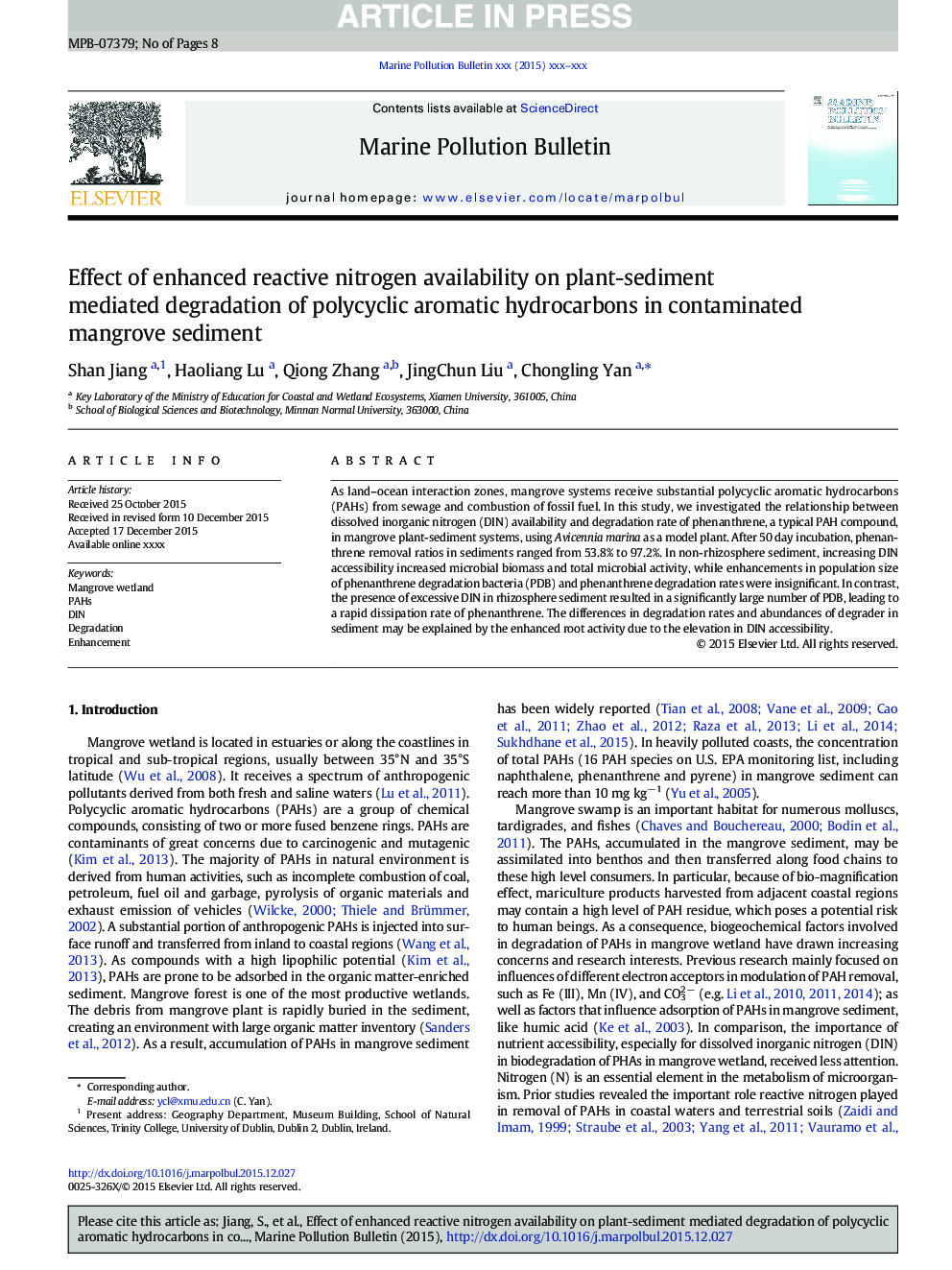| Article ID | Journal | Published Year | Pages | File Type |
|---|---|---|---|---|
| 6356088 | Marine Pollution Bulletin | 2016 | 8 Pages |
Abstract
As land-ocean interaction zones, mangrove systems receive substantial polycyclic aromatic hydrocarbons (PAHs) from sewage and combustion of fossil fuel. In this study, we investigated the relationship between dissolved inorganic nitrogen (DIN) availability and degradation rate of phenanthrene, a typical PAH compound, in mangrove plant-sediment systems, using Avicennia marina as a model plant. After 50Â day incubation, phenanthrene removal ratios in sediments ranged from 53.8% to 97.2%. In non-rhizosphere sediment, increasing DIN accessibility increased microbial biomass and total microbial activity, while enhancements in population size of phenanthrene degradation bacteria (PDB) and phenanthrene degradation rates were insignificant. In contrast, the presence of excessive DIN in rhizosphere sediment resulted in a significantly large number of PDB, leading to a rapid dissipation rate of phenanthrene. The differences in degradation rates and abundances of degrader in sediment may be explained by the enhanced root activity due to the elevation in DIN accessibility.
Related Topics
Physical Sciences and Engineering
Earth and Planetary Sciences
Oceanography
Authors
Shan Jiang, Haoliang Lu, Qiong Zhang, JingChun Liu, Chongling Yan,
